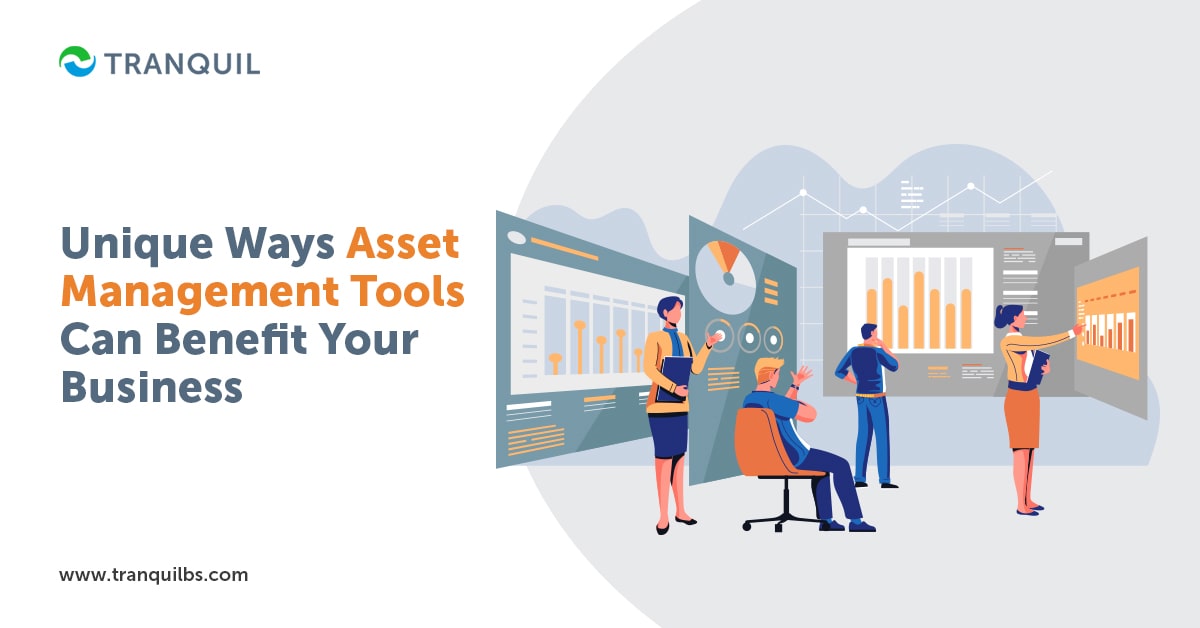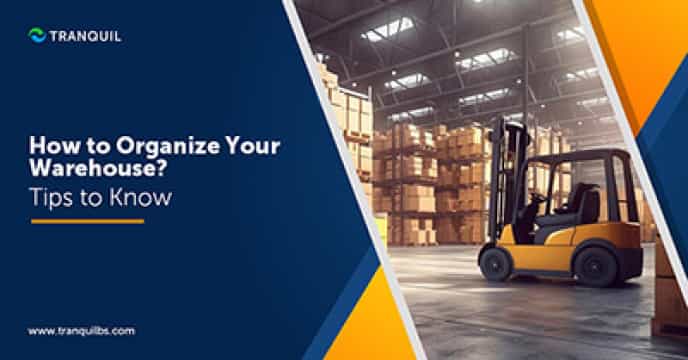Any business that depends on asset output, would benefit from implementing a robust asset management software.
It can locate your assets almost instantly, reduces expenditure, and quickens maintenance activities.
Manual methods can also do this task, but operations heavily reliant on assets need an advanced digital tool to simplify the job and ensure there are no errors or omissions.
There are innumerable benefits of asset management software, which are even more apparent once you shift from manual, paper-based methods.
ALSO READ: ERP software in Warehouse & Fixed Asset Management
Benefits of Asset Management Software
Here are some of the most important ones:
1. Better Asset Visibility

Any business has a number of assets, each serving a specific purpose. Assets can be digital, physical, IT, human resources, and facilities, among other things.
When a business grows, the number of assets it needs and owns also increase, and this can make manual recording of each asset extremely cumbersome and time-consuming.
With the right asset management software you can make sure that you have clear visibility into all your assets.
It stores the information in a single, central database – the asset register.
You can get detailed information on each asset, like the date and price of purchase, its current location and status, unique ID number, and so on.
ALSO READ: Keys To Make Project Management Success
2. Track All Physical Assets in Real-Time
Fixed assets can be compared to living organisms, as they enter the system, multiply, leave, and even move around the organization.
This makes it all the more important to track them properly – and this is facilitated by asset management software.
Barcodes, QR codes, GPS trackers, RFID tags, NFC tags, etc. are the different types of labels and asset-tracking tags.
Each of these has unique benefits depending on your specific requirements.
With real-time asset management solutions, you can make sure that your asset registers are always up-to-date and error-free.
3. Eliminate Ghost Assets


This is among the most important benefits of asset management.
Ghost assets are assets that you’re unable to physically see but still appear in the register.
These assets may be recorded wrongly, or be lost or stolen, but for some reason, remained in the system.
This problem doesn’t occur with asset management software as it instantly identifies ghost assets and lets you rectify the error.
This means that you don’t have to pay tax or insurance premiums on assets you don’t actually own.
ALSO READ: Different Ways to Improve the Procurement Process
4. Enhanced Customer Service
With proper asset management, your whole organization can be run smoothly.
You also have a properly documented process implemented for the utilization and supervision of the equipment used in your company.
This in turn allows you to deliver better customer service – giving them no opportunities for complaint.
This means they are more likely to be repeat customers.
It can also help you gain new customers, as the word of your service and product quality spreads.
In short, both customer retention and customer acquisition are facilitated by good asset management.
This can have a positive impact on your bottom line.
ALSO READ: BI vs ERP
5. Access Data Anywhere and at Any Time


Tranquil is a cloud-based solution, which means your employees can access the asset management information whenever they want, through their own devices.
They get secure, authenticated access to relevant information that empowers them to make the right decisions.
They can view details, update information, add assets, and a lot more, even if they are not at the workplace.
This is especially useful for field operators, maintenance engineers, and asset and inventory managers.
The availability of mobile devices with inbuilt cameras and scanners capable of reading barcodes, QR codes, RFID tags, etc., makes their task even easier.
ALSO READ: Common Problems in Manufacturing Industry
6. Eliminate Manual Systems
With automation, you can say goodbye to manual methods like whiteboards and spreadsheets, which are more prone to errors, have no historical records, and can be cumbersome to share across departments or teams within the same department even.
A small business could consider downloading spreadsheet templates to track and supervise assets, but this will become increasingly difficult as your business grows and you add more assets.
The more data you have to collect, the higher the chances of errors being made.
Only a digital tool like asset management software will be truly effective in the long run for your business.
ALSO READ: Why Safety Stock is Important?
7. Locate Assets Easily
When you run a business where you move physical assets around a lot, you need to know where your assets are at a given time so that they can be brought back to where they should be once a particular employee is done using them.
Tracking tags using GPS, RFID, and other technology, integrated with the asset management system can locate your assets in an instant, helping you know where any of your equipment is at a given time.
ALSO READ: What is Pipeline Inventory and Decoupling Inventory?
8. Monitor Equipment Condition Proactively
The asset condition monitoring feature can handle a range of events like damage caused by extreme temperatures (for medicines and other medical products like blood), shock caused by falls (electronic equipment), etc.
It can also notify you if any equipment is slowing down – taking longer to complete its usual tasks – and alert you to its potential failure.
Asset tracking software help in continuous monitoring of equipment use, allowing you to repair or replace the machine or specific parts before it breaks down and disrupts business activities unexpectedly and for a longer duration.
ALSO READ: How Can you Track UOM?
9. Better Manage the Asset Life Cycle


Tranquil asset management software enables businesses to properly understand asset life cycles.
This helps in procuring, operating, maintaining, and disposing them of as efficiently as possible.
The software also provides valuable insights about asset performance thanks to the detailed data it contains.
There are four main stages in the life cycle of an asset:
- Planning – Recognizing the necessity of procuring a particular asset
- Acquisition – Buying an asset and assigning it
- Operation – When the asset is used for the organization’s activities
- Disposal – When an asset is no longer operable, it has to be sold or retired after its depreciation value is calculated
ALSO READ: Debit notes Vs Credit Notes
10. Proper Maintenance Planning
Maintenance of assets is essential if you want to extract the maximum performance from it, over the longest time possible.
Creating an effective schedule of maintenance is one of the critical benefits offered by an asset management system, as it helps to maintain assets in ideal working order for the longest possible time.
Strategies of maintenance can vary; some engineers may prefer preventive maintenance, while others may like to take a reactive maintenance approach.
ALSO READ: What is Business Process Improvement (BPI)?
In either case, when you have a good maintenance plan, you can ensure:
- Minimal disruption of business due to machinery and equipment breakdown
- Reduced cost of breakdowns and emergency repairs
- Higher uptime of machinery and equipment
- Extended operational life of physical assets
11. Maintain Regulatory Compliance


With asset tracking software, you can easily ensure that you comply with governmental regulations and industry accreditation requirements.
Computers don’t lie and make it easier to prove compliance.
While there is no rule against using spreadsheets and pen and paper to maintain records of assets to maintain compliance, it can take up a lot of time and effort on your part – and you can make errors.
It will become more and more difficult as your business grows and you acquire more assets for operational and other purposes.
Asset management software can simplify this complex task, so that you are always on top of compliance requirements, and your employees can devote their time to more value adding tasks.
ALSO READ: Sales Order vs Purchase Order
12. Predict Expenditure and Budgets
When you have the full history of a physical asset, right from its acquisition till the end of its life, you have a solid base to make accurate forecasts regarding the purchase of assets in the future.
Asset management software can thus help you with the structuring of business expenditure as well as budgets for the coming months or years.
13. Identification of Trends
Just like operations and forecasting, you can learn a great deal regarding your assets from your asset management system.
The software can also help you to identify trends, which in turn helps in understanding the life cycle of a specific asset.
This knowledge is beneficial and allows you to effectively schedule maintenance checks and early repairs.
This way, you can recognize potential problems and take care of them before they blow up into major problems and disrupt business operations.
ALSO READ: How AI transforming ERP?
14. Operate More Efficiently
Tranquil asset management software enables you to understand how each asset contributes to your business; various assets may have roles to play in different sectors or departments of your organization.
This includes things like efficient and optimal operation of each asset for maximum benefits, capability of each asset, details of ROI of each asset, and whether the asset needs to be disposed of in order to reduce costs.
15. Reduce Loss
Loss can happen in many different ways.
Human beings are not perfect, and are quite likely to misplace movable physical assets.
With the right asset management software in place, you can ensure that this does not happen.
16. Prevent Theft
Thefts do happen, especially in large business settings.
Having an asset management software along with asset tracking tags or codes can act as a deterrent, and you can certainly reduce the occurrence of theft significantly, if not prevent it altogether.
ALSO READ: What Is Cloud Data Protection?
Wrapping Up
We can see that implementing a proper asset management solution offers tremendous benefit to businesses, small or large.
You can save a lot of money in the long run even if you have to spend initially for the software.
Tranquil asset management software is a robust, cloud-based solution that is designed to scale with your business. Do schedule a demo with our experts to see how it works!





